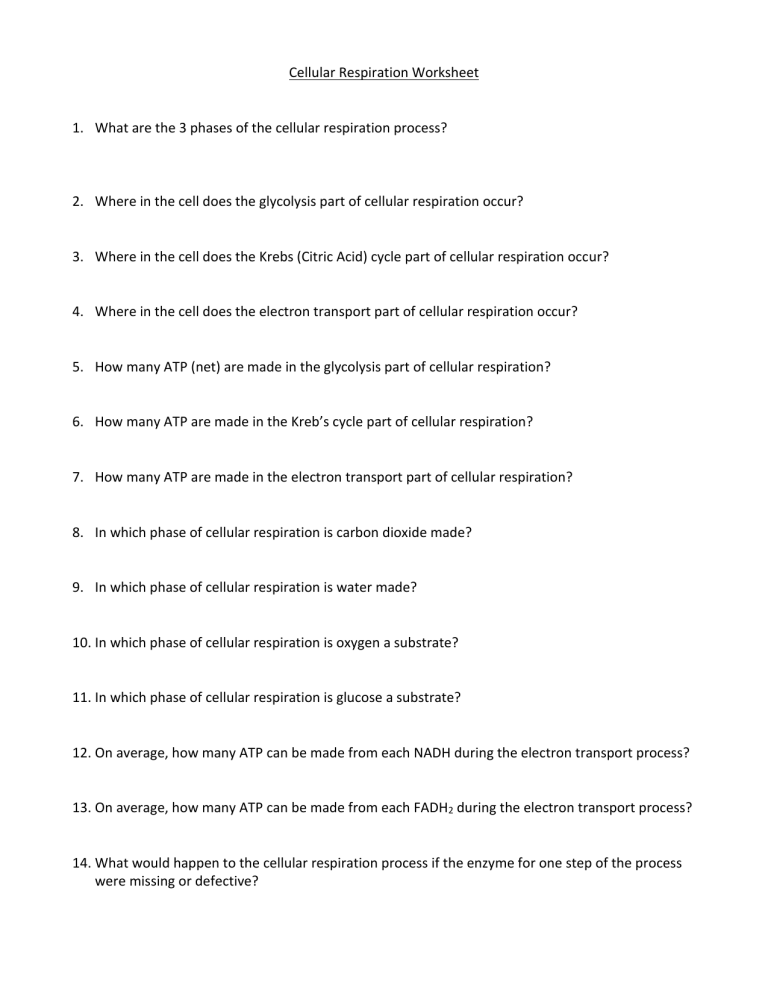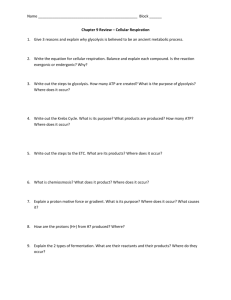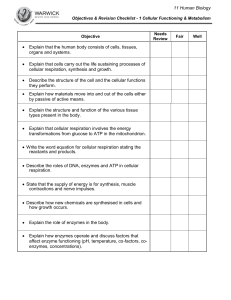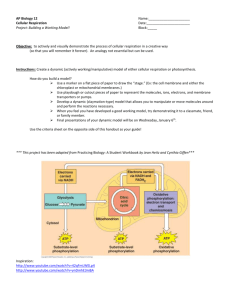Respiration review worksheet

Cellular Respiration Worksheet
1.
What are the 3 phases of the cellular respiration process?
2.
Where in the cell does the glycolysis part of cellular respiration occur?
3.
Where in the cell does the Krebs (Citric Acid) cycle part of cellular respiration occur?
4.
Where in the cell does the electron transport part of cellular respiration occur?
5.
How many ATP (net) are made in the glycolysis part of cellular respiration?
6.
How many ATP are made in the Kreb’s cycle part of cellular respiration?
7.
How many ATP are made in the electron transport part of cellular respiration?
8.
In which phase of cellular respiration is carbon dioxide made?
9.
In which phase of cellular respiration is water made?
10.
In which phase of cellular respiration is oxygen a substrate?
11.
In which phase of cellular respiration is glucose a substrate?
12.
On average, how many ATP can be made from each NADH during the electron transport process?
13.
On average, how many ATP can be made from each FADH
2
during the electron transport process?
14.
What would happen to the cellular respiration process if the enzyme for one step of the process were missing or defective?
15.
Explain why this happens.
16.
What is the overall reaction for fermentation in yeast?
17.
What is the overall reaction for lactic acid fermentation?
18.
Only a small part of the energy released from the glucose molecule during glycolysis is stored in
ATP. How is the rest of the energy released? (HINT: It is a product in the overall reaction for cellular respiration.)
BONUS – Answer the questions below on a separate sheet of paper and turn them in before the test .
They are worth a possible of 5 bonus points on the test.
1.
When your cells use fat for energy, the fatty acids are broken up into molecules of acetyl CoA.
Predict how many ATP can be made from one molecule of acetyl CoA if oxygen is present. Show your work.
2.
Suppose that each fatty acid in a certain fat can make 9 molecules of acetyl CoA. Predict how many ATP can be made from the fatty acids in this fat. (Remember there are 3 fatty acids in the fat molecule.)








